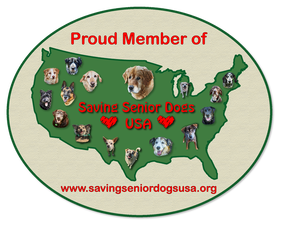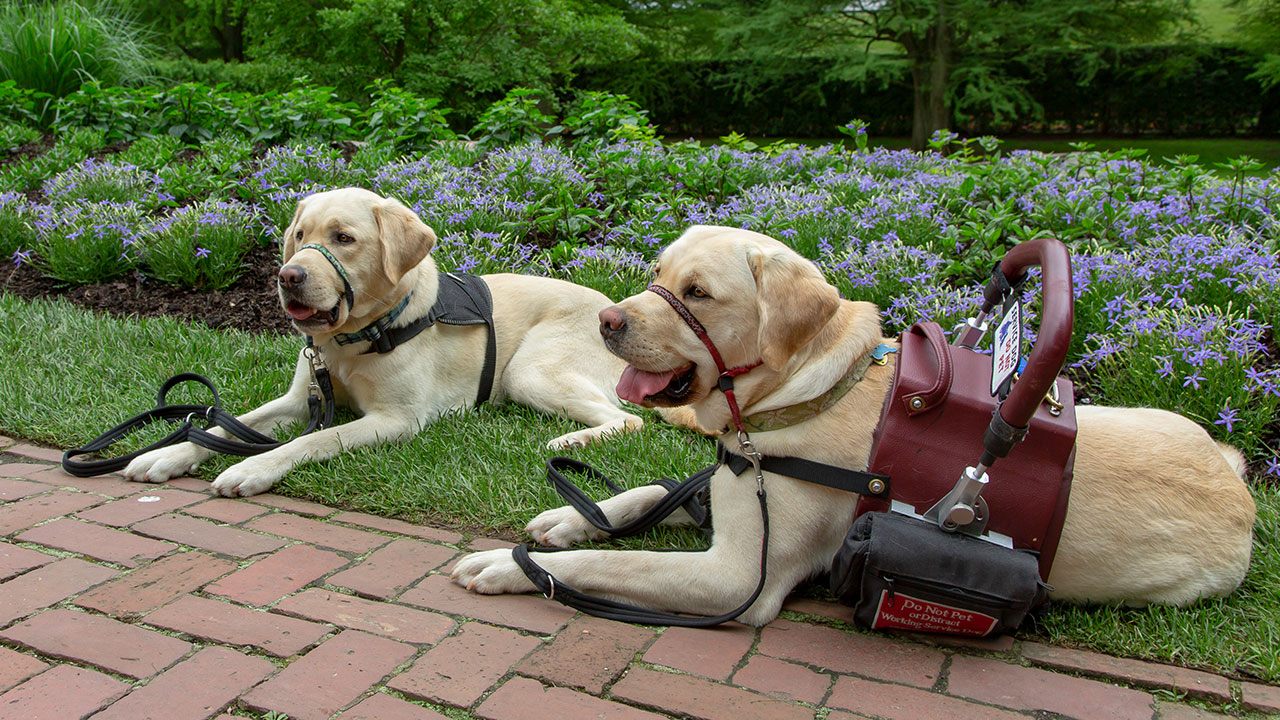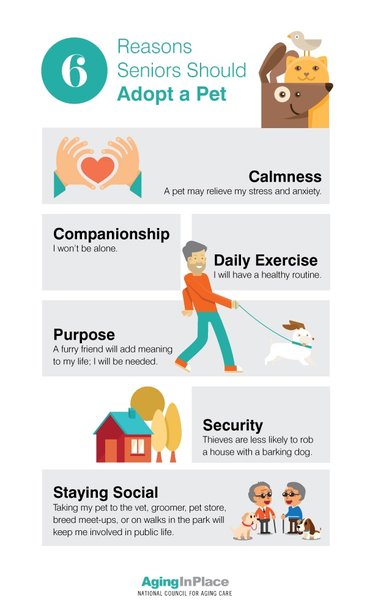|
What is the Saving Senior Dogs USA?Our goal is to educate the public about the plight of homeless senior dogs all across the United States and the joys of adopting them. We strive to do this through the collaborative efforts of senior dog rescues throughout the USA. We provide dog lovers across the country with a resource that is available 24/7/365 with information about senior dogs and how and where you can adopt them.
Please join us for Saving Senior Dogs Week 2022, October 24 - 31! This is our annual national educational and fundraising campaign to benefit senior dogs and senior dog rescues in the United States. Your support of this cause will help raise much needed funds for our member rescues, making it possible for them to continue to carry out their missions. Seventy-five percent of the funds raised during Saving Senior Dogs Week, as well as those donations that come in throughout the year, are divided equally among our member rescues. Twenty-five percent of the funds go into a grant fund to help our member rescues with medical expenses for the dogs they rescue.
0 Comments
 NEW FOR 2021: Saving Senior Dogs Week is thrilled to partner with the New York Dog Film Festival™ for their 2021-2022 campaign. The New York Dog Film Festival™ supports animal welfare organizations across the country that focus on the most vulnerable dogs: the old ones. A portion of every ticket sold across the country will benefit all the participating rescues of Saving Senior Dogs Week. The Festival Premiere on October 24th kicks off Saving Senior Dogs Week, but, of course, the life-saving rescues and adoptions take place all 52 weeks of the year, as does the Festival's support of their work. Please visit SavingSeniorDogsWeek.org for more information. LILY’S LEGACY SENIOR DOG SANCTUARY PRESENTS SECOND ANNUAL SAVING SENIOR DOGS WEEK National Senior Dog Awareness Campaign to Benefit Senior Dog Rescues in the United States October 26 – November 1, 2020 Petaluma, CA (September, 2020) – For the second year in a row, Lily’s Legacy Senior Dog Sanctuary, a nonprofit rescue organization dedicated to saving homeless senior large-breed dogs in California, will partner with senior dog rescue organizations from across the United States to present the Second Annual Saving Senior Dogs Week - a week long national education/fundraising campaign designed to raise public awareness of the plight of homeless senior dogs all cross the United States. Saving Senior Dogs Week (October 26 – November 1, 2020) is a week-long national social media campaign aimed at raising awareness of the struggles of homeless senior dogs, increase public awareness of the joys of adopting senior dogs, reduce unnecessary euthanasia, and provide existing senior dog rescues in the United States with much needed funding to carry out their missions. “We were extremely touched by the amount of support we received with our first Saving Senior Dogs campaign last year - it was truly incredible to see people from all over the United States, and the world embrace this cause,” said Alice Mayn, Executive Director of Lily’s Legacy Senior Dog Sanctuary. “People are becoming aware of the struggles of homeless senior dogs and we’re so pleased to have given out our first Saving Senior Dogs grant this year to a new start-up senior dog sanctuary. But we still have so much work to do especially now in these uncertain times.” It is estimated that approximately 670,000 shelter dogs are euthanized each year in the United States. Senior dogs are least likely to be rescued or adopted from shelters and are most at risk of being euthanized. Although there are an estimated 14,000 animal rescue organizations nationwide, less than 40 of them are dedicated exclusively to rescuing, rehabilitating and re-homing senior dogs. Proceeds from the fundraising campaign will be divided equally among the participating senior dog rescue organizations, and 25% of the funds will go into the Saving Senior Dogs grant fund to provide startup funding and support for individuals interested in founding a new senior dog rescue. 100% of the funds will go towards saving thousands of homeless senior dogs. The first Saving Senior Dogs Grant has been awarded (August 2020) to Daisy Lu Ranch Senior Dog Sanctuary in Camarillo, CA for medical care for their senior dogs. Lily’s Legacy is inviting other senior dog rescue organizations across the United States to partner with them for Saving Senior Dogs Week. Current partnering Senior Dog Rescues organizations include: Albert's Dog Lounge Dog Rescue - Wisconsin Daisy Lu – California (NEW) Grand-Paws Senior Sanctuary – California Homer J's Senior Dog Sanctuary - Nevada Lionel’s Legacy – California Muttville – California Old Dog Home Inc. - Georgia Peace of Mind Dog Rescue – California The Roland Senior Dog Rescue Gang – Florida Senior Dog Haven & Hospice - Delaware Vintage Paws Rescue - Florida Vintage Pet Rescue – Rhode Island Special thanks to our 2020 Saving Senior Dogs Week sponsors mezzettamakesitbetta.com canna-pet.com canasrealty.com petrescuerx.com “The joy of giving these seniors a second chance in their golden years outweighs the pain of losing one.” - Laurel, senior dog adopter “If you are brave enough to say goodbye, life will reward you with a new hello.” - Joan, senior dog adopter For more information on Saving Senior Dogs Week, to become a partnering senior dog rescue, to become a sponsor of Saving Senior Dogs Week 2020, or to donate, contact Alice Mayn at [email protected] or call 707-787-7010. Visit www.lilyslegacy.org Media Contact: Clara Franco 858-699-4220 [email protected] # # # # # Saving Senior Dog Week is a National Senior Dog Awareness Campaign to Benefit Senior Dogs and Senior Dog Rescues in the United States.
In collaboration with Senior Dog Rescues throughout the USA, Saving Senior Dogs Week is being led by Lily’s Legacy Senior Dog Sanctuary, located in Petaluma, CA. The goal of this campaign is to raise public awareness of senior dogs, the joy of adopting them, and to support existing senior dog rescue organizations in the USA. Senior dogs are the ones least likely to be rescued or adopted and are most at risk of being euthanized in shelters. Of the estimated 14,000 rescue groups nationwide, less than 40 are dedicated exclusively to rescuing, rehabilitating and re-homing senior dogs. The campaign will be driven through social media. If you love senior dogs as much as we do, please consider sharing on your favorite platforms. At the end of the campaign, 75% percent of the funds raised will be divided equally among the participating senior dog rescues. The remaining 25% will go into a new grant fund to assist in the creation of new senior dog rescues. Together we can save thousands of homeless senior dogs. For more information on Saving Senior Dogs Week or to become a partnering senior dog rescue contact Alice of Lily's Legacy at [email protected] or call (415) 328-5161 Service dogs are trained to provide assistance and therapy to various people with disabilities. They can aid in navigation for people who are visually impaired, assist a child who is having a seizure, calm a veteran who suffers from post-traumatic stress disorder (PTSD) and can even dial 911 in the event of an emergency. Many individuals depend on service dogs to help them live their everyday lives.
According to the ADA, service dogs are individually trained to do work or perform tasks for people with disabilities. Examples of such work or tasks include guiding people who are blind, alerting people who are deaf, pulling a wheelchair, alerting and protecting a person who is having a seizure, reminding a person with mental illness to take prescribed medications, calming a person with Post Traumatic Stress Disorder (PTSD) during an anxiety attack or performing other duties. Tahoma Guiry, chief marketing officer for K9s for Warriors says that what a service dog can do for veterans specifically is nothing short of astounding. “Some veterans will come in and will not have been to a store in a few years, have insomnia, panic attacks, depression, and when they come into our facility, you can see a transformation. They get more and more confident.” Service dogs differ from emotional support dogs in that a service dog is trained to perform a job that his or her owner cannot. On the other hand, an emotional support dog is a companion animal that provides therapeutic benefits. Support animals do not have to be specifically trained. Service dogs are protected by the Americans with Disabilities (ADA) Act, Fair Housing Act and the Air Carrier Access (ACA) Act. Costs of getting and owning a service dogNaturally, service dogs require extensive training. That training, in addition to veterinary costs, staff and dog trainers, registration and more, runs the average cost of a service dog between $20,000 and $60,000. For many individuals who need a service dog, these costs can be way out of their budget. However, there are several options to make a service dog more affordable, and many organizations provide service dogs free of charge to qualified veterans. Every situation is different, but it is important to keep in mind additional costs to upkeep your dog. These costs can include the following: There are several organizations that provide free or partial financial assistance to veterans, those who are visually impaired, and physically disabled individuals in need. They also provide alternative methods of financing a service dog, even if you don’t meet the specific requirements to receive full financial assistance. Financing optionsThe initial costs and subsequent upkeep of a service dog can be overwhelming, but there are other financing options available. They include: Grants Several organizations can provide grant assistance for individuals who need a service dog. Organizations that can help include the United States Department of Veterans Affairs (VA), which provides service dog benefits and matches vets with accredited organizations. Non-profit organizations also train and match service dogs with people in need. For a full list of resources, see below. Fundraising Some organizations provide partial financial assistance for the cost of their service dog and encourage families to fundraise the remaining amount in their community through various channels. FSA accounts You can use a flexible spending account (FSA) attached to your insurance policy to buy a service dog if you get a letter of medical necessity (LMN) from your doctor. Programs that Provide Financial Assistance It’s important to research the best organization from your specific area and needs. Below is a list of fully accredited organizations, programs and grants that can help. For a geographical search of all accredited service dog organizations, visit Assistance Dogs International and enter your exact geographical location. VeteransThe VA provides service dog benefits and refers people to accredited agencies. Many of these organizations do not charge for the dog or the dog’s training. America’s VetDogs – the Veteran’s K-9 Corps, Inc.: The service dog programs of America’s VetDogs® were created to provide enhanced mobility and renewed independence to veterans, active-duty service members and first responders with disabilities. Brigadoon Service Dogs: Brigadoon Service Dogs provides trained service dogs for veterans, children, adults with physical, developmental, and behavioral health disabilities to promote a more independent and enriched life. Patriot Paws: This organization trains and provides service dogs at no cost to disabled American veterans and others with mobile disabilities and Post-Traumatic Stress Disorder (PTSD) to help them restore their physical and emotional independence. K9s for Warriors: K9s for Warriors provides service canines to veterans who suffer from PTSD, traumatic brain injury and/or military sexual trauma as a result of military service post 9/11. K9s for Warriors works to return veterans to civilian life with dignity and independence. NEADS: Service dogs for veterans programs match highly skilled service dogs with United States veterans from any conflict who have a permanent physical disability, are deaf or who have profound hearing loss, or have MS or other progressive conditions. (These disabilities do not need to be combat-related.) Retrieving Freedom, Inc.: Retrieving Freedom is an ADI accredited 501(c)3 non-profit organization dedicated to training service dogs to serve the needs of veterans and children with autism. Autism Service dogs may employ any number of combinations to work with autistic individuals, including behavior disruption to distract and disrupt repetitive behaviors or meltdowns, tethering to prevent and protect a child from wandering, and search and rescue tracking if a child does wander. Can Do Canines: Can Do Canines provides assistance dogs to people with disabilities, free of charge. Fully-trained dogs, sometimes adopted from local animal shelters, are provided to clients with mobility challenges, hearing loss or deafness, seizure disorders, diabetes complicated by hypoglycemia unawareness or children with autism. Dogs for Better Lives: Certified professional staff train and place assistance dogs with individuals who are deaf or who have hearing loss and with children who are on the autism spectrum. Professionals also use our dogs in their work with special needs students and others who benefit from the dogs’ calming presence. Canine Companions for Independence: Canine Companions for Independence is a non-profit organization that enhances the lives of people with disabilities (including individuals with autism) by providing highly trained assistance dogs and ongoing support to ensure quality partnerships. Paws With A Cause: Paws With A Cause® enhances the independence and quality of life for people with disabilities nationally through custom-trained assistance dogs. PAWS® also works especially with deaf/hearing impaired individuals, individuals with seizure disorders, children with autism and people with physical disabilities. NEADS: Service dogs through the NEADS Social Dog Program are trained in a variety of tasks that can address a range of issues facing a child with autism and his or her family. Retrieving Freedom, Inc.: Retrieving Freedom is an ADI accredited 501(c)3 non-profit organization dedicated to training service dogs to serve the needs of veterans and children with autism. People with Physical Disabilities Physical disabilities could include those with mobility issues, including MS, muscular dystrophy, spinal injury, amputation, arthritis, cerebral palsy, or it could include visually impaired or hearing impaired individuals. Mobility Issues Brigadoon Service Dogs: Brigadoon Service Dogs provides trained service dogs for veterans, children, adults with physical, developmental, and behavioral health disabilities to promote a more independent and enriched life. Canine Partners of the Rockies: CaPR specializes in training mobility assistance dogs. These dogs assist people with mobility limiting disabilities by retrieving objects, pulling wheelchairs, opening and closing doors, turning light switches off and on, barking to indicate that help is needed, etc. The Service Dog Project (SDP): The SDP has donated over 150 Great Dane service dogs to assist mobility-impaired individuals to achieve greater independence. Preference is given to veterans and their families as well as residents of the New England area. The Service Dog Project is a registered 501(c)(3) and is fully accredited by Assistance Dogs International (ADI). Paws With a Cause: Paws With A Cause® enhances the independence and quality of life for people with disabilities nationally through custom-trained assistance dogs. PAWS® also works especially with deaf/hearing impaired individuals, individuals with seizure disorders, children with autism and people with physical disabilities. Canine Companions for Independence: Canine Companions for Independence is a non-profit organization that enhances the lives of people with disabilities (including individuals with autism) by providing highly trained assistance dogs and ongoing support to ensure quality partnerships. Service Dogs, Inc.: Service Dogs, Inc. builds better lives for Texans overcoming challenges through partnerships with custom trained assistance dogs provided free of charge, and helps individuals in particular who have severe hearing loss or loss of mobility. Canine Partners for Life: CPL increases the independence and quality of life of individuals with physical, developmental and cognitive disabilities or who are in other situations of need. CPL provides and sustains professionally-trained service and companion dogs. Can Do Canines: Can Do Canines provides assistance dogs to people with disabilities, free of charge. Fully-trained dogs, sometimes adopted from local animal shelters, are provided to clients with mobility challenges, hearing loss or deafness, seizure disorders, diabetes complicated by hypoglycemia unawareness or children with autism. Visual impairmentThe Seeing Eye: The Seeing Eye is a philanthropic organization intended to enhance the independence, dignity and self-confidence of blind people through the use of Seeing Eye® dogs. Guide Dogs for the Blind: Exceptional client services and a robust network of instructors, puppy raisers, donors and volunteers prepare highly qualified guide dogs to empower individuals who are blind or have low vision from throughout the United States and Canada. Guiding Eyes for the Blind: Guiding Eyes for the Blind has a simple mission: to create meaningful connections between exceptional guide dogs and people with vision loss at no cost so that they can experience all of life’s adventures. Guide Dogs of America: Guide Dogs of America empowers people who are blind and visually impaired to live with increased independence, confidence and mobility by providing expertly matched guide dog partners. Services are provided free of charge and available to people within the U.S. and Canada. Guide Dogs of the Desert: Guide Dogs of the Desert has made a difference in the lives of individuals who are blind or visually impaired over the past 45 years. More than 1,400 client/guide dog teams from around the country have graduated from Guide Dogs of the Desert – enjoying richer, fuller lives. HealthPaws With a Cause: Paws With A Cause® enhances the independence and quality of life for people with disabilities nationally through custom-trained assistance dogs. PAWS® also works especially with deaf/hearing impaired individuals, individuals with seizure disorders, children with autism and people with physical disabilities. Eyes Ears Nose and Paws: Eyes Ears Nose and Paws is a nonprofit organization located in Chapel Hill/Carrboro, North Carolina. The organization trains and place mobility assistance and medical alert dogs and provides ongoing support to working assistance dog teams that have graduated through its programs. Canine Partners for Life: CPL increases the independence and quality of life of individuals with physical, developmental and cognitive disabilities or who are in other situations of need, including dogs who can detect low or high blood sugar levels (hypoglycemia and hyperglycemia) in the early stages. Can Do Canines: Can Do Canines provides assistance dogs to people with disabilities, free of charge. Fully-trained dogs, sometimes adopted from local animal shelters, are provided to clients with mobility challenges, hearing loss or deafness, seizure disorders, diabetes complicated by hypoglycemia unawareness or children with autism. Children Brigadoon Service Dogs: Brigadoon Service Dogs provides trained service dogs for veterans, children, adults with physical, developmental, and behavioral health disabilities to promote a more independent and enriched life. Canine Partners of the Rockies: CaPR specializes in training mobility assistance dogs. These dogs assist people with mobility limiting disabilities by retrieving objects, pulling wheelchairs, opening and closing doors, turning light switches off and on, barking to indicate that help is needed, etc. Can Do Canines: Can Do Canines provides assistance dogs to people with disabilities, free of charge. Fully-trained dogs, sometimes adopted from local animal shelters, are provided to clients with mobility challenges, hearing loss or deafness, seizure disorders, diabetes complicated by hypoglycemia unawareness or children with autism. Paws With a Cause: Paws With A Cause® enhances the independence and quality of life for people with disabilities nationally through custom-trained assistance dogs. PAWS® also works especially with deaf/hearing impaired individuals, individuals with seizure disorders, children with autism and people with physical disabilities. NEADS: Service dogs through the NEADS Social Dog Program are trained in a variety of tasks that can address a range of issues facing a child with autism and his or her family. Retrieving Freedom, Inc.: Retrieving Freedom is an ADI accredited 501(c)3 non-profit organization dedicated to training service dogs to serve the needs of veterans and children with autism. The importance of accreditation “We are proud to say that we’re accredited by Assistance Dogs International (ADI),” says Sarah Mathers, development assistant at Patriot PAWS Service Dogs, a 501(c)(3) nonprofit which trains and provides service dogs at no cost to disabled American veterans and others with mobile disabilities and PTSD to help them restore their physical and emotional independence. “ADI Standards are the benchmarks for excellence in the assistance dog industry and we strongly encourage anyone who is looking for a service dog organization to start with those organizations listed on the ADI website.” Mathers says that she strongly encourages any individual to look at service dog organizations that are accredited by ADI, which set industry and worldwide standards for individuals who train dogs. Other financial considerationsIf you don’t qualify for full financial assistance, it’s possible to adopt your own dog and utilize a certified independent trainer to offset some of the larger costs associated with using one organization for adopting a dog, training and medical needs.
Bottom line Mathers said that there are countless stories of transformation. Patriot PAWS’ own veteran coordinator, Aaron Mixell, an Army veteran seriously injured by an IED blast that left him with traumatic brain injury and debilitating post-traumatic stress. “As a result of his PTSD, Aaron was literally living in his closet,” Mathers said. Mixell and his service dog, Chief, have been a team for about four years now, and Aaron is a completely different person,” says Mathers. “He would tell you that Chief saved his life.” Mathers says, “It takes about 18-24 months and costs $35,000 to fully train and certify a Patriot PAWS service dog. We rely completely on private donations and grants to fund our training programs and do not charge our veterans a penny. The veterans we serve have already paid the ultimate price and this is the least we can do in return.” Service dogs can be expensive for some. However, there are avenues you can take to afford one. If you need help in the form of a furry companion, don’t automatically assume it’ll be too expensive to get a service dog of your own. *This content was created by a for-profit corporation as a way to advertise their products. I copy the content here because the information is valuable, but removed all subtle and explicit marketing. The National Council on Aging's new report highlights just how valuable our programs are for seniors. Their full article is re-posted below. Click here to read the article on their site. Are you wondering how you are going to care for your pet as you age in place? Are you wondering if you should adopt a pet as you age in place? This guide will help you decide on the best choice for you. Studies have shown that owning a pet can be physically and mentally beneficial for people of all ages. In the case of senior citizens, “just 15 minutes bonding with an animal sets off a chemical chain reaction in the brain, lowering levels of the fight-or-flight hormone, cortisol, and increasing production of the feel-good hormone serotonin. The result: heart rate, blood pressure and stress levels immediately drop. Over the long term, pet and human interactions can lower cholesterol levels, fight depression and may even help protect against heart disease and stroke” (Byrne, 2015). Pet Adoption for Seniors If you are mostly immobile, a cat may be the best option because you don’t have to walk them. A small dog that uses pee pads or a caged animal may also be a good option. Senior dogs and cats are better for the elderly because they are more calm, quiet, and less maintenance. Be sure to have the pet checked out by a veterinarian. A pre-existing illness or disease could drain your bank account or make you sick. For those seniors who want a dog, there are many reasons to be wary of jumping into pet adoption too quickly. The lack of mobility and inability to drive to and from the vet, groomer, or pet store worries them. The initial costs are usually high. They also worry that if and when there comes a point when they can no longer care for the dog, that the dog might be taken to a shelter and eventually euthanized. Many seniors feel like their worsening health condition is a burden, and a pet might possibly add to that. Top 6 Reasons Seniors Should Adopt a Pet There are numerous reasons for adopting a pet. From companionship to security, pets can provide seniors a better quality of live and improve aging in place. Finding the right pet for you or your family member is easy, and the benefits can be far-reaching. Matching Older Dogs with the for Seniors in Illinois created an adoption program that matches senior dogs and senior cats with senior citizens. They worked out solutions to the issues that seniors have with pet adoption, and the program is very successful. The program pays for most of the adoption fee, chooses calm and housebroken older dogs, and provides support every step of the way. If the animal is not a good fit, the organization will take back the pet and refund any fees. Other humane shelters around the nation are trying to replicate this model.
Pet Therapy for Seniors Those who work caring for the elderly say that pets pull withdrawn seniors out of their shell, provide mild activity and cardio through walking and grooming the pet, and offer a way to feel needed and connect with the world. Pet therapy can also help with Alzheimer’s Sundowners Syndrome. Nighttime can be very confusing and disorienting for folks with Alzheimer’s disease. This is when some Alzheimer’s patients try to run away or leave their home. A pet can prevent this issue by keeping those with Alzheimer’s connected and occupied. “Animals’ non-verbal communication and profound acceptance can be soothing for those with difficulty using language; some may even connect with memories of their own treasured pets” “Animals’ non-verbal communication and profound acceptance can be soothing for those with difficulty using language; some may even connect with memories of their own treasured pets” (Byrne, 2015). Pet therapy has shown to improve appetite, social interaction, brain stimulation, and tactile activity. The unconditional love of a dog brings healing and meaning to a sometimes lonely stage in life. Ask your doctor, physical therapist, or social worker about any pet therapy programs in your community. Just because you give away a pet or choose not to take one into your home, it doesn’t mean that you can’t visit with other family pets or receive pet therapy. There are pet therapy home visit services all over the country. Alliance of Therapy Dogs and Therapy Dogs International are volunteer-run organizations with outposts all over the world. A local volunteer will come to your home and bring a trained service dog that is very well-behaved. The dog can play, cuddle, and perform commands during a half hour or one hour session. Service Dogs for Seniors For seniors with disabilities, a service dog might be the best option. “The Americans With Disabilities Act (ADA) of 2011 defines service dogs as those trained to do work directly related to a person’s disability. Emotional support animals and dogs used as crime deterrents are excluded from this definition. A service dog is expected to accompany a person with a disability at all times” (Wang, 2013). Service dogs go through extensive training to remain calm and help their owner with mobility issues. Service dog skills include: opening doors with a strap, pushing doors closed, helping their handler dress and undress, helping those in wheelchairs sit up straight & place feet and arms on footrests and armrests, preventing falls, and retrieving wheelchairs and walkers. It’s amazing the tasks these dogs can do! In an emergency situation, service dogs are trained to perform life-saving tasks, like retrieving medication, calling 911, opening the door for EMT and first responders, running to get help or barking for help after identifying an emergency, and laying down on their handler’s chest to help them cough or breath better. For hearing impaired owners, service dogs are trained in alerting their handlers to the presence of other people or particular sounds, retrieving dropped objects, carrying messages, and warning that an unseen vehicle is approaching. For visually impaired owners, service dogs are trained in avoiding obstacles like moving vehicles, signaling change in elevation, locating objects on command, and retrieving dropped objects. Find the right service dog for you. Pets often increase the amount of exercise pet owners get versus non-pet owners. More exercise isn’t always a good thing for older people with injuries and susceptibility to falls. There are also some nonprofits in existence that will help elderly folks care for their pets when walking their dog multiple times a day or cleaning out the litter box is too burdensome. Look to see if there is one in your area. The Cost of Pet Ownership It is important to make sure you have the funds to adopt a pet. Puppies have been known to cost upwards of $800 in their first year for healthcare, food, toys, and everything else that goes into pet care. Are you able to spend over $500 a year on your dog or cat? If not, a bird or fish might be a better option. In some cases, it may be necessary to make the heartbreaking decision to give up a pet. Elderly people give up their pets for several different reasons. They might not be physically able to care for them anymore, they might not be allowed to have a pet in their assisted living facility or nursing home, they might rather spend their time traveling, or they might actually be relieved to no longer have the responsibility. The Risks What you don’t hear about very often are the dangers of owning a pet as a senior citizen. “Over 86,000 people per year have to go to the emergency room because of falls involving their dogs and cats, and these fractures can be devastating for the elderly,” said Judy Stevens, an epidemiologist with the Centers for Disease Control and Prevention (Seliger, 2012). If you think about it, you might know someone (maybe yourself) who has fallen trying to care for a pet. Some studies even find that the more attached an elderly person is to their pet, the more depressed they are. This could very well be a correlation, not causation, but it is something to consider if you are prone to depression or mental illness. Some doctors studying seniors and their pets believe that the death of an animal can affect an elderly person’s depression in a more severe way. Life can be isolating as you age, and the death of pet could add to this stress. Other studies have found that if you have a strong social network, having a pet makes no difference in your happiness level. These opposing studies create conflicting views on the subject, so it is wise to just do what’s best for you. You know yourself better than anyone, so be honest about whether keeping your pet or adopting one is a good idea or not. Create a pros and cons list. Many doctors believe that the benefits outweigh the risks, but they might not for you. See if you can find a co-caretaker for your pet. Is your mobility good enough to not fall when picking up a dog that is running circles around you? Is it hard for you to bend down to their level to clean up after a cat or dog? Asking a loved one or volunteer agency to take care of the more physical aspects of pet care can alleviate stress and susceptibility to accidents. If you don’t have a close family member or friend to do this, you might have to give away your pet. This is a hard decision, and your doctor and family can help you make it. The downside of pet ownership is a difficult subject to breach because no one wants to give up their beloved pet. Again, designating a trusted family member, neighbor, or friend to come check on you and your pet’s well-being is a great idea. If you have a grandchild or child whom bonds with your dog or cat, they might not mind coming over to let the dog out, or scoop out the cat litter. Don’t put yourself in danger of breaking bones simply because you are too proud to ask for help. Having a plan B and/or a pet helper may prevent injuries that lead to surgery, months of rehabilitation, and a lot of emotional stress. How to Care for Your Pet While Aging in Place Although, pets can do wonders for an elderly adult, the pet’s needs are important to keep in mind as well. In some cases, an elderly person may forget to medicate or feed their pet. They may get to the point where walking their dog is difficult. For these reasons, choosing a designated family member or in-home health aide that is willing to check on the pet and help take care of it would be ideal. Make sure you are taking care of yourself first and foremost (Remember the oxygen mask metaphor? You can’t take care of someone if you don’t care for yourself first). Some older folks go without food or necessities because money is tight, and they love their dog too much to let them suffer. Don’t be that person! Reach out to family members, friends, neighbors who care, or a nonprofit that provides assistance to aging pet owners. Veterinarians are good resources for finding pet care assistance. Your well-being should be top priority. Have a succession plan for your pet. If you are an aging pet owner, create a succession plan you are comfortable with early on. Designating a god-parent or guardian for your pet in case you become ill or unable to care for the pet, is the humane, smart path to take. This designated guardian could be a family member, friend, neighbor, or trusted pet adoption agency. If you do decide to give up your pet for adoption, an “open adoption” is best. Meet with your designated guardian beforehand, so that they can bond with your pet and see if they are really right for ownership. And, make sure that you will be allowed to visit your pet if you are able. If a family member or home health aide moves in to be a caregiver, they might not be able to take care of both you and your pet. A rambunctious, needy pet or a pet with multiple medications and a high maintenance routine may be too much work. Caregivers may not be willing to perform these tasks on top of other caregiving duties. This is a decision you will have to make together. Euthanizing a pet should be the last resort. Some older people believe that putting their animal down is the best option because the animal is so bonded to its owner that it would be too depressed to bond with a new owner. This is not normally the case. There are many options for adoption, foster care, and shelters that can take care of your pet. Keep your pet for as long as possible, but don’t be afraid to start the succession plan when you need to. Taking away a pet may cause an elderly person to deteriorate mentally and physically, so make sure to allow regular visits with the pet. Many older folks look forward to these planned pet visits. ConclusionOwning a pet while aging in place is certainly not for everyone. Ask your veterinarian, family members, and doctor if this is the right decision for you and your health. If you are healthy enough or your caregiver is willing enough to care for a pet, the rewards of pet ownership can be life-changing. An aging dog, cat, or even bird could be the best medicine and your best friend, all in one. Sources: https://www.petfinder.com/pro/for-shelters/pets-senior-citizens/ http://www.aplaceformom.com/senior-care-resources/articles/pet-friendly-assisted-living https://newoldage.blogs.nytimes.com/2012/03/30/rethinking-the-value-of-pets/ http://www.friendshipcircle.org/blog/2013/05/23/a-complete-guide-to-service-therapy-and-emotional-support-dogs/ http://money.usnews.com/money/retirement/slideshows/10-reasons-older-people-need-pets?slide=10 https://www.agingcare.com/articles/parents-can-no-longer-care-for-pets-151682.htm https://www.agingcare.com/articles/benefits-of-elderly-owning-pets-113294.htm http://www.aspca.org/about-us/press-releases/aspca-releases-updates-estimated-costs-pet-ownership The following article appeared in the Washington Post March 3, 2017. Original Article (w/photos) More People are Adopting Old Dogs --- Really Old DogsBy Karin Brulliard
When a German Shepherd rescue organization posted Elmo’s photo online last fall, it made no effort to mask the dog’s problems. He wore a cone around his neck to prevent him from licking the large open sore on his hip. His fungus-ridden feet were swollen. His graying, 11-year-old face held a pathetic, ears-to-the-ground gaze. Steve Frost, a retired fire captain in Northern California, said he saw the photo and thought Elmo “looked like hell.” He immediately decided he wanted the dog. Four months later, Frost sits by his fireplace every morning and evening and gives Elmo four pills for his various ailments, “like an old man.” On Wednesday morning, he took Elmo in for prostate surgery. Frost, who had not owned a dog in several years, is now ushering one through its final years of life, which he says he figures will be “a lot better than living in a kennel.” Frost, 59, met Elmo through the Thulani Program, one of a growing number of animal organizations focusing on adopting out older dogs, or “senior dogs” that are typically 7 years or older. Their age makes them some of the hardest-to-place animals in a society that still adores romping puppies, although that is changing as books on elderly dogs and social media campaigns convince pet-seekers that the mature pooches often come with benefits, such as being house-trained, more sedate and less demanding of people with busy lifestyles. But some of those adopters go further, selecting pets from programs for dogs in need of hospice care, or what amounts to assisted living for very ill or very old dogs. These programs usually commit to covering the cost of a dog’s medical and dental care, which might otherwise be a major obstacle to finding them homes, said Lisa Lunghofer, executive director of the Maryland-based Grey Muzzle Organization. The donor-funded group gave $225,000 in grants last year to 38 senior dog programs nationwide, several of which now promote hospice adoptions. Frost, who lives in Redding, Calif., and is a part-time professional pilot, said he knew he wasn’t up to the task of raising a puppy. He also knew he wanted a German Shepherd. An Internet search led him to Thulani, and that led him to Elmo, one of the organization’s hospice dogs. Frost knows little about Elmo’s past, other than that he was turned over to an animal shelter in Los Angeles and had clearly been neglected. His ears had mites, his innards had worms, his prostate had a tumor and he was puppy-like in one key way: At age 11, he wasn’t house-trained. Now Elmo has two beds in Frost’s home and a permanent place in the back seat of his four-door Ford F-150, and the two take what Frost called “a man shower” together every few days. “This guy has just burrowed his way into my heart,” Frost said. Lunghofer stresses that most senior dogs do not require the kind of care Elmo has. The majority “just need a good home,” she said, and many “regain their vitality and reward their families with years of unconditional love and devotion.” And more of them are finding those homes, she said. Grey Muzzle — which says it envisions “a world where no old dog dies alone and afraid” — recently surveyed its grantees, the majority of which said the situation for older dogs has improved in the past two years and that young people are more open to such adoptions. Nearly all said the main reason people adopt aging dogs is “altruism,” although mellowness and potty skills were also cited. “This is a great way to ease into dog ownership,” said Erick Smith of Muttville Senior Dog Rescue in San Francisco, a Grey Muzzle grantee. “It’s not this epic commitment that you’re staring down.” Dante, a 10-year-old black Lab mix, had an eye removed shortly before he was adopted by David Writz of Eau Claire, Wis. (David Writz)David Writz, 34, said he’s hoping his newly adopted 10-year-old black Lab mix, Dante — who is not a hospice case — will stick around for five years or so. Like Frost, Writz found his dog online after deciding he didn’t have time for a puppy. When the two met in person at Bob’s House for Dogs in Eleva, Wis., Writz was smitten, despite the fact that Dante was about 20 pounds overweight. Then the shelter called and told Writz that the dog would be having emergency surgery to remove an eye with glaucoma. Did Writz still want him? “I was like, ’Obviously,’ ” said Writz, who works in a payroll office. “I figured at the very least I’d just get him an eye patch.” Knowing that Dante won’t be around for long “is the depressing aspect of it,” said Writz, who regularly takes Dante to a local brewery, where the dog happily begs for pretzels. “But I figure he’ll be happy the rest of his remaining years.” Russell Ulrey, a Muttville volunteer who helped start the shelter’s hospice program, said he was initially worried that he wouldn’t find takers. He was wrong. Last year, Muttville adopted out 85 hospice dogs, and Ulrey said demand is higher than supply. Caring for a terminally ill dog is “a life-changing experience,” said Ulrey, 41, but one he tells potential adopters to approach with flexibility. Ulrey, who has adopted several hospice dogs, said one lived 14 months until, one day, he charged up a hill to a favorite park and collapsed. A veterinarian euthanized him there. An Airedale mix named Ralph, in contrast, had multiple organ failure, rotten teeth and survived just a week. “A dog like Ralph, we didn’t take him out to the park. He didn’t want to go,” he said. “We made him cozy and made him feel really loved, maybe for the first time in his life.” )These days, Ulrey and his partner, Marie Macaspac, are the parents of Chachito, a 20-pound mutt who qualified as a hospice dog because he is 16 years old, blind and deaf — exactly the kind of pet few adopters would be willing to take on. Chachito’s regime involves homemade meals of brown rice pasta and chicken, supplements for his joints, arthritis medication and lots of hanging out at the couple’s Fairfax, Calif., home. “He has his route,” Ulrey said. “He bonks into one wall and then knows he’s going to turn right.” Farther north, in Redding, Elmo is recovering from his prostate surgery, which added hundreds of dollars to the $1,000 or more Frost has paid — with Thulani funds — to get the dog in shape. Soon, Frost said, he’ll take Elmo for a ride in an airplane. “The best you can do is make him have a great life, because his life up until this point has been hell,” Frost said. As for the end? Frost said he doesn’t focus on that. “If it didn’t hurt, you’ve got to question the love that’s involved.” The Heavens Rejoice! Return our Sun, Rufus J. The Foxiest One. With more than 100 pet therapy hours under his collar, Rufus had many friends awaiting him on the other side of the rainbow bridge. Rufus will always be remembered at the Sanctuary for being our first official animal assisted therapy provider.
Not only was he a consummate professional, he was a perfect example of why senior dog companionship is not only a good choice for many who desire a canine companion, but a better choice. He adjusted quickly to his new environment, was very easy to care for, and only peed in the house in acts of protest. We are sadden by the loss of our friend, but we take joy in the memories, which only by grace were we able to make. Thank you to the Nevada Humane Society for saving Rufus from certain euthanasia at the California shelter he was surrendered to, giving our community the opportunity to benefit from his unique brand of unconditional love. A very big thank you goes out to Henry and Judy from Homeward Bound Veterinary Services. They provide compassionate, in-home care for everything from wellness exams to end of life care for all of your four legged friends. I appreciated how patient and understanding they were during a very emotional time for us. "As more people discover their wonderful qualities, more old dogs are getting the second chance they deserve."  The Grey Muzzle Foundation February 21, 2017 Birdie is one lucky senior dog. Found as a stray, her paws painfully sore from miles of walking, the 7- year-old yellow Labrador retriever was taken in by Safe Harbor Lab Rescue outside of Denver, Colorado. There, she was quickly adopted by a family who preferred an older dog. A new survey by The Grey Muzzle Organization—which provides grants to help at-risk senior dogs at Safe Harbor and dozens of other rescue groups and animal shelters around the country—reveals that Birdie is one of thousands of older dogs who are benefitting from a nationwide trend toward more positive perceptions and increased adoption of senior dogs. The results are based on input from 30 Grey Muzzle grant recipients who found homes for nearly 18,000 dogs including almost 3,900 seniors in 2016. Once considered unadoptable, seniors were often the first to be euthanized to make room for younger dogs in overcrowded animal shelters. Today, however, the Grey Muzzle survey shows more people are open to bringing home an older dog who already knows how to fit into family life. “Based on their hands-on experience, two-thirds of our survey respondents reported that the situation for homeless senior dogs has improved over the past year or two,” said Dr. Lisa Lunghofer, Executive Director of The Grey Muzzle Organization. “No dog is more grateful or loving than a senior. As more people discover their wonderful qualities, more old dogs are getting the second chance they deserve.” |
Archives
October 2022
Categories |








 RSS Feed
RSS Feed
